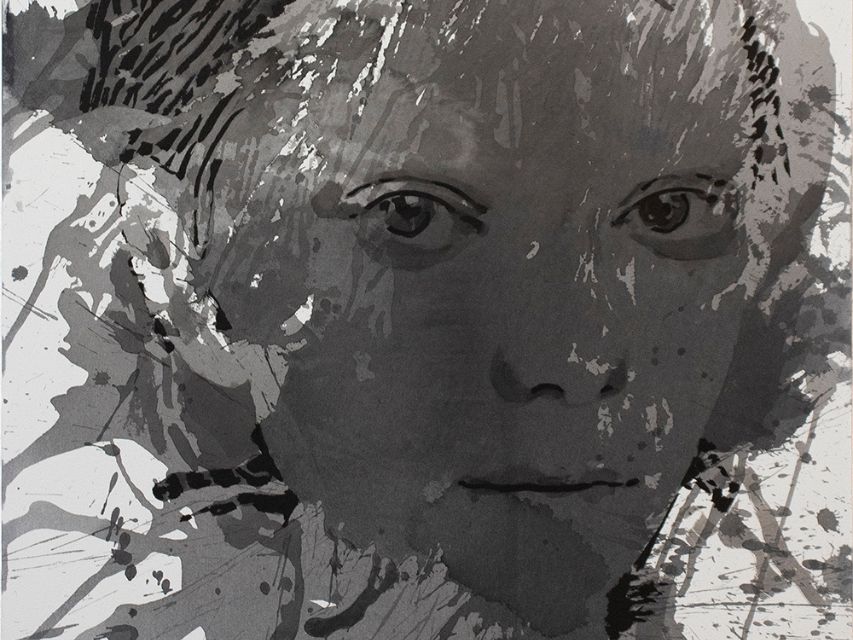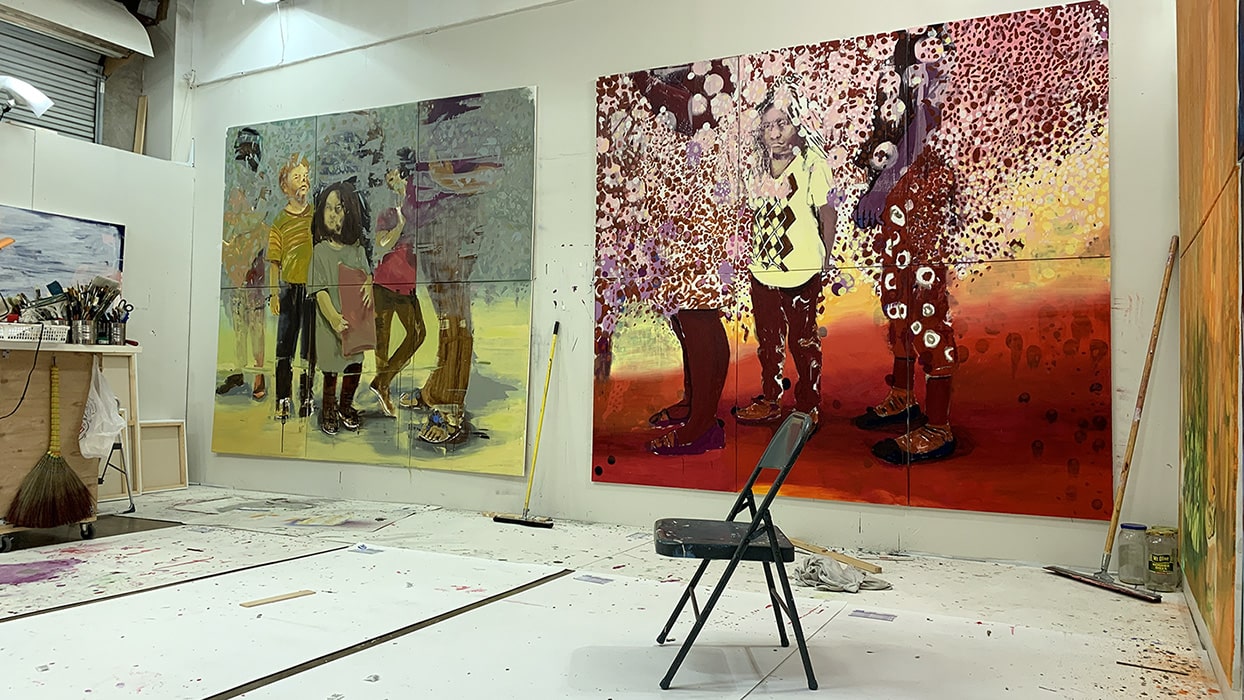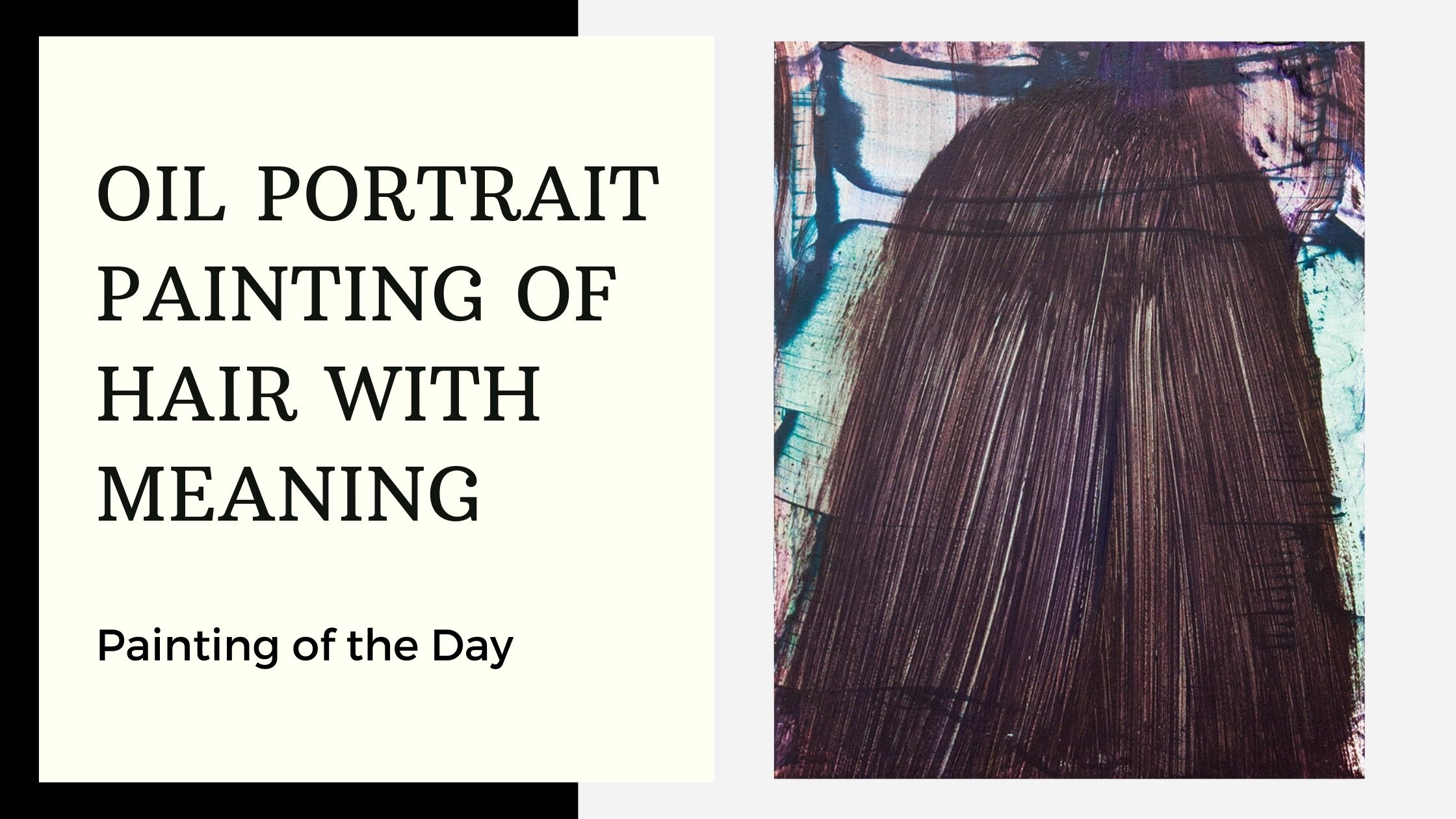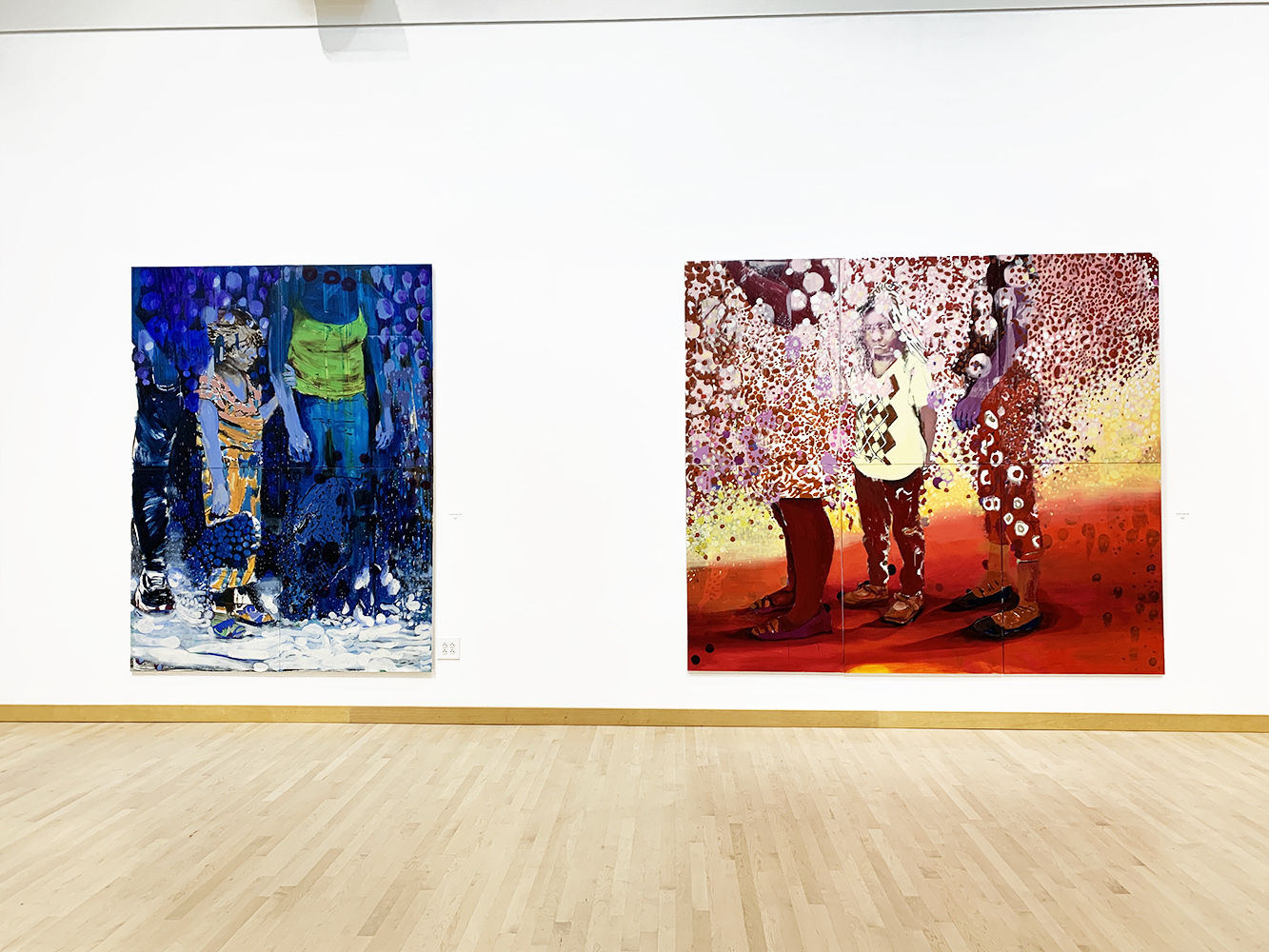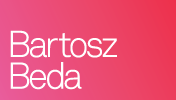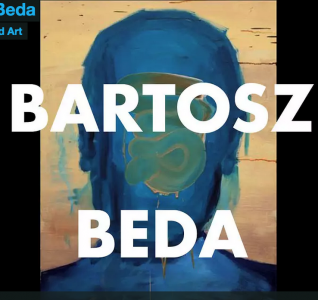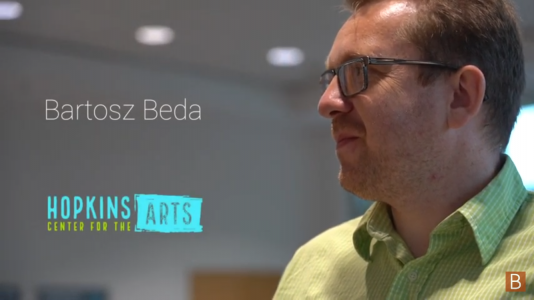
Fresh Paint Magazine | Studio Visit Interview
Bartosz Beda
Bartosz Beda received his BA (Fine Arts) in 2011 and his MA (Fine Art) in 2012 from Manchester Metropolitan University, UK. He was a recipient of 6 months Scholarship in Dresden, Germany. Beda was selected for the Catlin Guide for most promising emerging artist in UK. He has exhibited in solo exhibitions at Liebre Gallery, Madrid, Spain; BAC Gallery, Bogota Colombia, The Studios, Manchester, UK. He has participated in group exhibitions including New Sensations, Saatchi Gallery, London, UK and Detail, H Project Space, Bangkok, Thailand.
www.bartoszbeda.com
FP: In your bio you mention that you travel a lot between the U.S. and UK. Do you always make work in the studio or do you adapt to creating during travel?
BB: It is a great opportunity to be able to live on two continents and to make paintings in two different parts of the world. It is much more refreshing for my mind than only holiday travels. The experience of going to the place I know and where I have worked before is priceless and gives new means of freedom. This little change brings satisfaction for many aspects of my life.
Now, we are living in a global village in big cities. Some of them are strategic cities where smaller transformations lead to changes in social dynamics. All of them are a part of larger transformations. Today, it is not enough to be based in one place or one city. The best I can get from what I do as a painter is coming from the experience of different styles of life, on two different continents. My practice is not limited to only painting, I practice a ‘life’ in various cities and different cultures. My painting is a part of this global environment where anything is possible.
These possibilities of taking my creativity from one place to another also cause struggles and require survival skills in the global village. I believe that cities themselves are not a jungle anymore; they are where you find your way to live. The real challenge right now is developing the capability to move among them and to identify them as one of your homes to which you come back whenever possible.
FP: How would you describe the subject matter of your work?
BB: I oscillate between abstract and figuration. I use images as a starting point and the selection of them can be pretty random. However, my paintings have a consistent subject matter. I am painting subjects related to religion, history, politics and other interests. My paintings are derived from the reflections I have based on the effect of a particular moment in time, and they are moments, which influence my daily practice. This gives me the ability to communicate with the viewer through my manipulation of an image.
Through my work I explore the parallel between daily life of human needs and the connection of people to visual sources found on personal mobile devices like phones and tablets. These everyday tools are stimulating our perception and imagination by hypnotising us more easily then ever with ideas and concepts, which very often fail in practice and have nothing in common with reality.
FP: What medium and technique do you typically work with?
BB: I work mainly with oil paints. Perhaps I like the smell of oil paints in my studio. It reminds me that I am a painter. It is a very interesting medium and allows me to experiment with surface and different methods of paint application. I believe that it is not always about the technique, but what I really want to say through painting. I am often times very rough with canvas surface.
FP: You moved to the UK from Poland. How does your personal history make its way into your paintings?
BB: Since age of seven, I always wanted to be a painter and do big things as an artist. I was doing everything to make it happen and began developing my skills in all fine arts as early as I can remember. I was very good in sculpture and there was a moment when I almost decided to become a sculptor but I found that I had an aptitude for painting. It was during the time when I worked for animation production ‘Peter and the Wolf, which got later an Oscar Prize. I had been working on scaling puppets made by another sculptor and she was motivating me to be a sculptor. I even made a sculpture portfolio. Then I went to the UK and decided that I needed to follow my heart and focus only on one thing, which I truly believed was painting.
None of the fine art mediums are easy, but I think that painting is the most challenging of them all. Painting has only a two dimensional surface to explore and the history of painting behind it, this doesn’t make it an easy medium at all.
FP: Your work often involves the figure, who are the characters depicted in your work?

BB: The figures depicted in my work are random people, family members, or historical / political figures. My concept is to manipulate images that people find in day-to-day life accessed through mobile devices. I am interested in reactions that viewers will have on the exhibited paintings, and I expect viewers to be surprised by how much images control and cause anxiety.
I am also inspired by words. Often times they decide what I will paint next. It was that way with the ‘Temptation’ paintings, where I was intrigued by origins of that word and it’s meanings in the culture. The definition of the word temptation says that it is a desire to do something wrong or unwise. The range of interpretations and meanings are wide. The paintings subject is beyond religious contexts. The concept of the word temptation can create a much different image for persons who have not seen the painting, but have an ability to imagine it, as something not related to what we consider as a holy. It is related directly to our personality and our ability to recognize the context without experiencing it. The emotional response appears once we experience something in reality. The attention and knowledge about temptation is obstructed, because what we see in paintings is holy and that is how we accept it. In fact, this representation of what is in the painting seems to work ultimately against the title. It is a particular condition for being human that we can isolate ‘temptation’ from all other concepts in our consciousness. The large and small scales of the paintings provide a dynamic back and forth conversation between the viewer and the paintings. The gestural application of paint is living in a mysterious space, where one thing becomes another.
FP: Where do you find your inspiration?
BB: Many things inspire my work. The fact that I am speaking a second language is one of these sources of inspiration. By playing with English words that have some impact or meaning for me, I am able to visualize concepts for paintings.
I am constantly on the move and that inspires me to paint too. I have my studio both in the United Kingdom and the United States. When I am in Manchester, obviously the big metropolitan city has a different impact on my work than a smaller college town in the United States. Manchester appears to be more about identity, labor, work and communication. It is a post-industrial city, where I can still sense an industry connection and that reflects in my work. My latest two paintings I made there ‘Labor I and II’ are strictly related to people who still work in industry. My work there reflects the busiest moments in life and is more about here and now, constantly on the move.
When I go to the United States, I am surrounded by a calm environment, where I am not involved that much with a city life. My work is different there, more colorful. I spend more time with each painting and contemplating the process of making each painting. The satisfaction is different.
FP: You seem to have a genuine love for painting. Where do you feel this medium is heading in today’s art world?
BB: I am a painter and I want to make an impact in the painting world, but I don’t know if I am the right person to answer this question. It is like estimating the value of diamonds. The experts are rarely wrong about the price and value, but at the end, only a few people establish the principles and standards. Also, nobody is becoming an expert overnight. It takes years to be great. As you mentioned, in the first place I have a love for what I do and this love pushes me forward. I think that future of painting depends on us painters, but I don’t think we can easily see where painting is heading.
Focus is the most important tool for me as a painter. Painting is hard work and shouldn’t be taken easily.
FP: In your bio you mention that you travel a lot between the U.S. and UK. Do you always make work in the studio or do you adapt to creating during travel?
BB: It is a great opportunity to be able to live on two continents and to make paintings in two different parts of the world. It is much more refreshing for my mind than only holiday travels. The experience of going to the place I know and where I have worked before is priceless and gives new means of freedom. This little change brings satisfaction for many aspects of my life.
Now, we are living in a global village in big cities. Some of them are strategic cities where smaller transformations lead to changes in social dynamics. All of them are a part of larger transformations. Today, it is not enough to be based in one place or one city. The best I can get from what I do as a painter is coming from the experience of different styles of life, on two different continents. My practice is not limited to only painting, I practice a ‘life’ in various cities and different cultures. My painting is a part of this global environment where anything is possible.
These possibilities of taking my creativity from one place to another also cause struggles and require survival skills in the global village. I believe that cities themselves are not a jungle anymore; they are where you find your way to live. The real challenge right now is developing the capability to move among them and to identify them as one of your homes to which you come back whenever possible.

